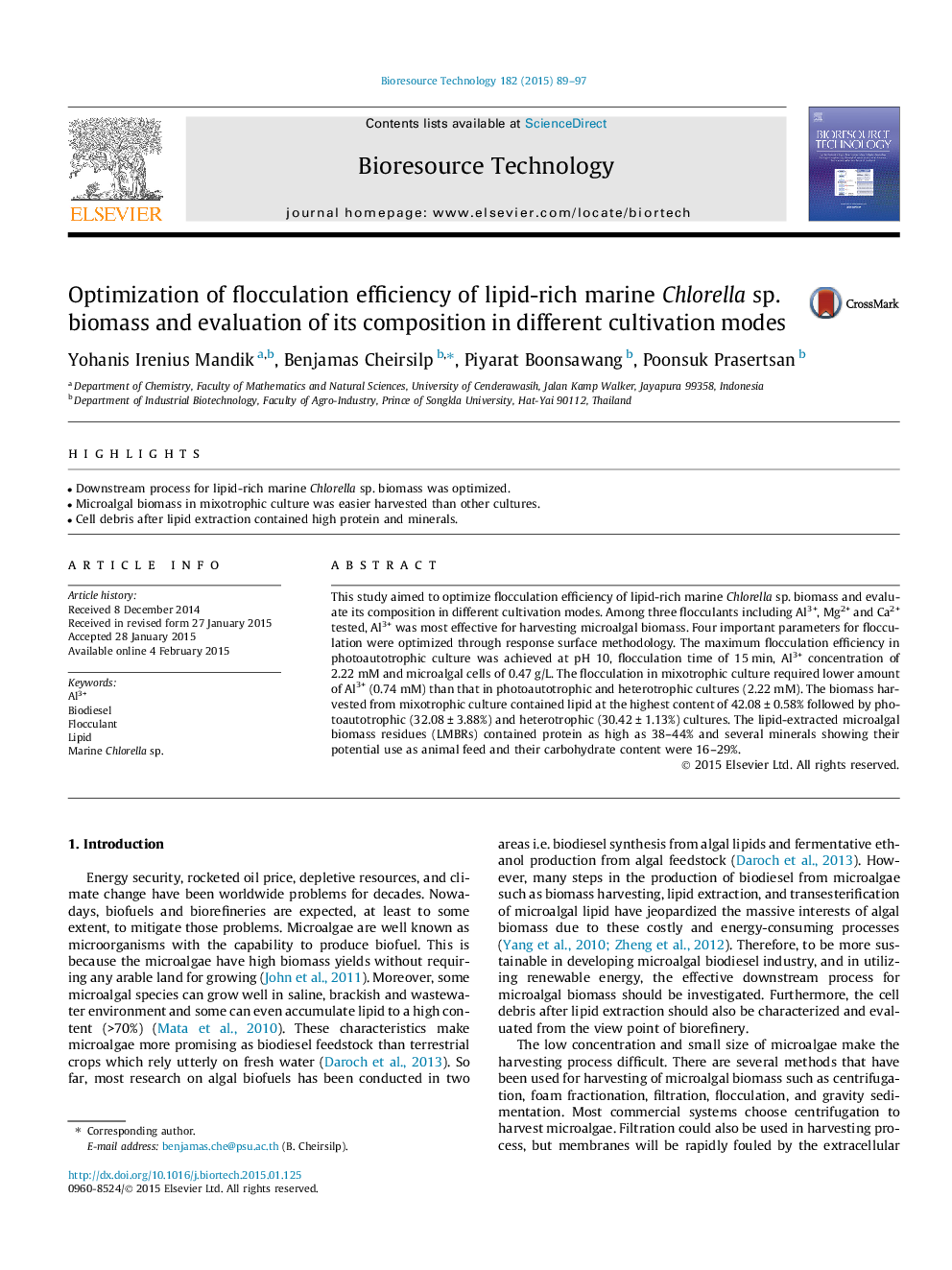| کد مقاله | کد نشریه | سال انتشار | مقاله انگلیسی | نسخه تمام متن |
|---|---|---|---|---|
| 679982 | 1459961 | 2015 | 9 صفحه PDF | دانلود رایگان |
• Downstream process for lipid-rich marine Chlorella sp. biomass was optimized.
• Microalgal biomass in mixotrophic culture was easier harvested than other cultures.
• Cell debris after lipid extraction contained high protein and minerals.
This study aimed to optimize flocculation efficiency of lipid-rich marine Chlorella sp. biomass and evaluate its composition in different cultivation modes. Among three flocculants including Al3+, Mg2+ and Ca2+ tested, Al3+ was most effective for harvesting microalgal biomass. Four important parameters for flocculation were optimized through response surface methodology. The maximum flocculation efficiency in photoautotrophic culture was achieved at pH 10, flocculation time of 15 min, Al3+ concentration of 2.22 mM and microalgal cells of 0.47 g/L. The flocculation in mixotrophic culture required lower amount of Al3+ (0.74 mM) than that in photoautotrophic and heterotrophic cultures (2.22 mM). The biomass harvested from mixotrophic culture contained lipid at the highest content of 42.08 ± 0.58% followed by photoautotrophic (32.08 ± 3.88%) and heterotrophic (30.42 ± 1.13%) cultures. The lipid-extracted microalgal biomass residues (LMBRs) contained protein as high as 38–44% and several minerals showing their potential use as animal feed and their carbohydrate content were 16–29%.
Journal: Bioresource Technology - Volume 182, April 2015, Pages 89–97
